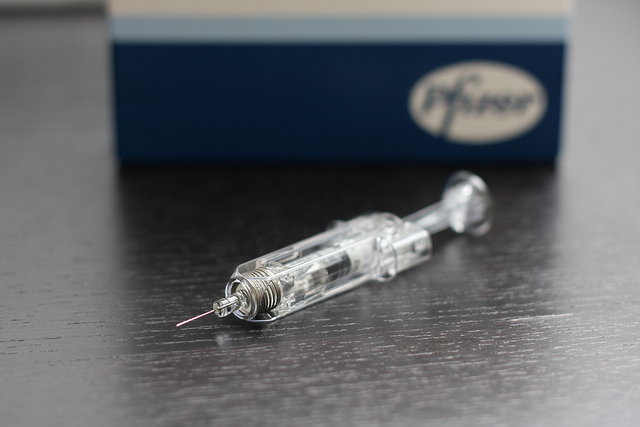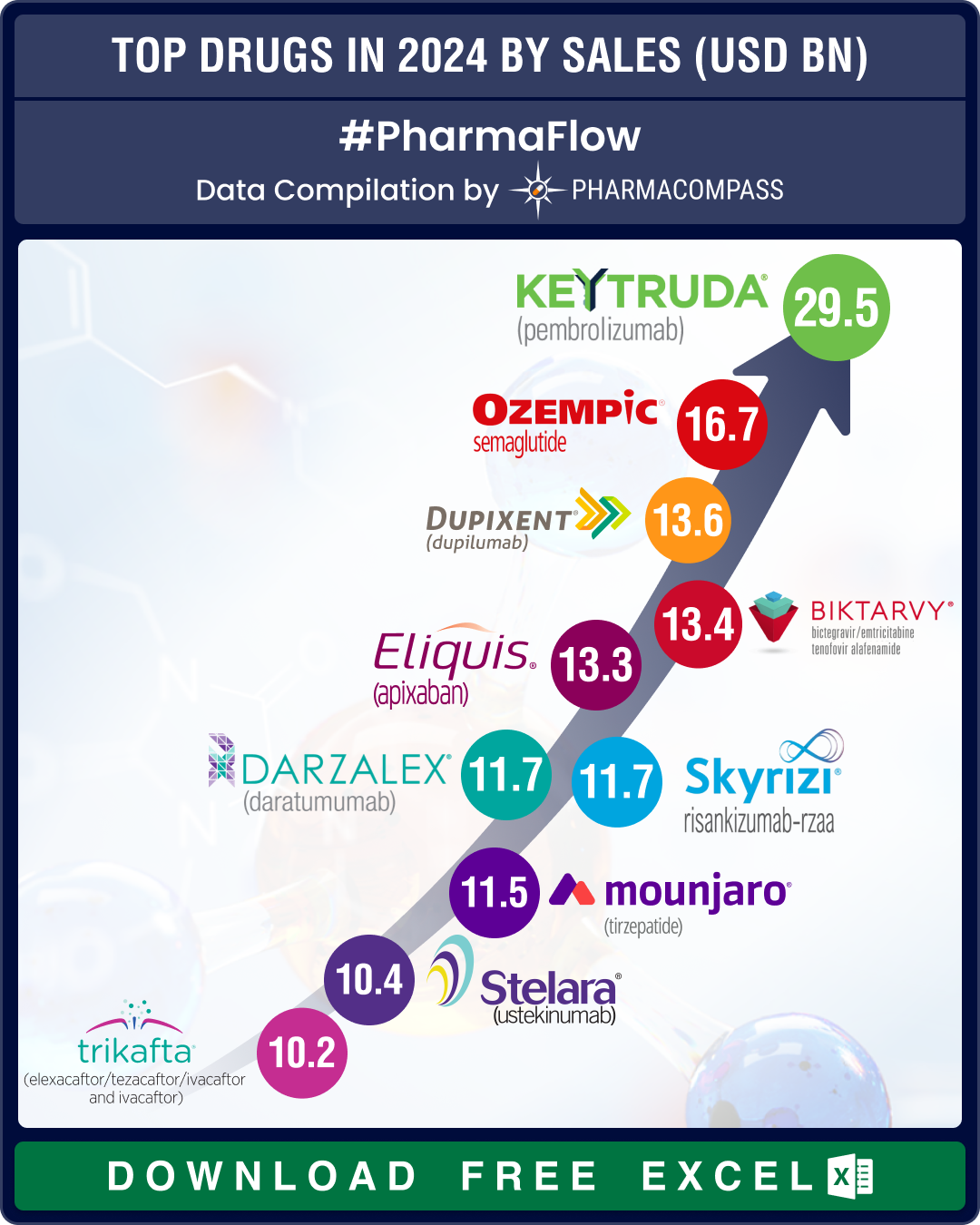
Within two months of 2017, we have already seen several pharmaceutical companies come under the regulatory lens and face action.
This week, PharmaCompass does a compliance recap, wherein companies like Pfizer saw lapses in their current good manufacturing practices (cGMPs) and companies in India, like Dr. Reddy’s and Cadila Healthcare, who received warning letters in the past, were busy with regulatory re-inspections at the erring sites.
Pfizer’s US facility receives a warning letter from the FDA
Pfizer’s fill/finish manufacturing facility in the United States recently received a warning letter from the US Food and Drug Administration (USFDA). This information was revealed in a press release issued by Momenta Pharmaceuticals a biotechnology company developing a generic version of Teva’s long-acting Copaxone® 40mg/mL (glatiramer acetate injection).
Momenta’s Glatopa 20 mg/mL product is already available in the US market and is promoted by Sandoz, which in turn has contracted the fill/finish manufacturing operation to Pfizer’s facility in McPherson, Kansas.
In February 2015, Pfizer acquired the McPherson site through its US $17 billion acquisition of Hospira. Pfizer was aware of Hospira's manufacturing record when it struck the deal to buy the drugmaker as the company was issued FDA warning letters on four of the seven continents Europe, North America, Asia and Australia.
While previous FDA inspections at the McPherson facility had raised concerns over the assurance of product sterility, no warning letter had ever been issued to this site.
This has been the first positive news for Teva this year, after a series of setbacks. Copaxone had generated US $ 4.22 billion in sales last year.
And as per Momenta’s press statement, “Glatopa 40 mg ANDA (abbreviated new drug application) remains under regulatory review.” While Momenta says it is working with Sandoz to resolve the matter, it is of the view that “an approval in the first quarter of 2017 is unlikely.”
“Pfizer has indicated that the warning letter does not restrict the production or shipment of the Glatopa 20 mg (glatiramer acetate injection) product,” Momenta stated in its press release.
The Pfizer warning letter will also be welcome news for Mylan as it had recently won a court ruling where four Orange Book-listed patents relating to Copaxone® 40 mg/mL were invalidated based on obviousness. Mylan has “filed a substantially complete ANDA” for a three times per week Glatiramer Acetate Injection 40 mg/mL.
Baxter’s cGMP deficiencies result in US$ 18 million settlement
Last month, Baxter International and Baxter Healthcare Corporation settled a type of civil lawsuit that whistleblowers are known to bring. It was settled under the False Claims Act (FCA) case with the Department of Justice (DOJ) for US$ 18 million.
The settlement in which there was neither an admission of liability by Baxter nor a concession by the United States that its claims are not well founded was an outcome of the government alleging that Baxter submitted false claims for a drug sold to the Department of Veterans Affairs and Department of Defense, as well as reimbursed by the Medicare and Medicaid programs, because the drug was “adulterated.”
A detailed blog written by Stephanie Trunk and Emily M. Leongini highlights that the issue emanated from the “presence of visible mold on HEPA filters installed above the clean rooms” where Baxter manufactured sterile intravenous (IV) solutions. The managers at Baxter prevented the relator and others from removing the moldy filters and from cleaning or sanitizing other associated contaminated surfaces, says the complaint.
This handling of the moldy filters by Baxter allegedly violated numerous cGMP requirements set forth in the FDA regulations. This includes the requirement that a manufacturer establish, and also follow, its own internal standard operating procedures.
While the government acknowledged that there was no evidence to suggest that Baxter’s IV solutions had been impacted by the moldy filters, it alleged that the IV solutions violated the FCA because of “Baxter’s failure to comply with cGMP requirements.”
In the past, cGMP violations have had the DOJ collect US$ 750 million from a GSK subsidiary in 2010 and US$ 500 million from Ranbaxy in India in 2013. With an increasing trend of warning letters being issued by the FDA to pharmaceutical manufacturers, it remains to be seen if DOJ will further “highlight the materiality of cGMP compliance to product purchases in support of FCA claims”.
Zydus turns around compliance problems with a zero 483 inspection
Zydus’ Moraiya (Gujarat, India) facility accounted for 60 percent of Cadila’s revenues in the US, its largest market. In an inspection performed by the FDA in September 2014, the investigators found that in 2013, Cadila had failed to adequately review 106 consumer complaints (out of 106 complaints received) and in 2014, up to the date of the inspection, they failed to adequately review another 132 consumer complaints (out of 132 complaints received).
While at the time of the inspection, Cadila had already taken the decision to recall products like Warfarin 2 mg (due to oversized tablets), Promethazine 25 mg (due to mixed tablets in the same bottle) and Atenolol 25 mg (due to “thicker appearance”), the inspectors got “no assurance” that the quality system at Cadila was under control and stated that the “deficiency appears to be a pattern of problem” at the Cadila site.
Zydus received a warning letter from the FDA in December 2015. Last week, Zydus announced that it did not receive any observations from the USFDA for its formulation facility at Moraiya, which indicates a successful resolution of the compliance at the plant.
The company said that the USFDA inspected the plant from February 6 to 15.
What’s next at Dr. Reddy’s and Marksans in India?
Marksans Pharma, a company with a questionable compliance track record, saw its manufacturing facility in Goa (India) fail an inspection by the UK drug regulator last year. The inspectors noted critical data integrity violations which included “evidence of destruction of multiple parts of records of prime data”.
In a filing with the Bombay Stock Exchange (BSE), the company announced that its plant in Goa had an inspection by the UK’s Medicines and Healthcare products Regulatory Agency (MHRA) from February 14-17, 2017. The inspection was completed without any critical observations, the company informed. It is now awaiting further instruction from the agency in this regard.
In a similar announcement, Dr. Reddy’s informed the bourses that its Miryalaguda facility has been issued a Form 483 by the USFDA with three observations, which the company is addressing. The audit of the company’s API manufacturing plant at Miryalaguda by the USFDA was completed on February 21, 2017.
Back in November 2015, the same facility had received a warning letter after FDA inspectors found partially-filled documents in the garbage.
Our view
Over the past years, we have seen compliance concerns being raised time and again at pharmaceutical manufacturing operations. Last week, Sato Pharmaceutical, a company established in 1939 in Japan, received a warning letter from the FDA as it failed to establish an adequate system for monitoring the conditions of its cleanroom environments.
Prior to that, FDA’s April 2016 inspection of ACS Dobfar’s operations in Brazil Antibioticos do Brasil (ABL) led to the issuance of a warning letter after the FDA investigators found that the filling zone for sterile injectable product was not sufficiently robust.
While data integrity concerns dominated news headlines last year, it seems that aseptic fill/finish may become a leading cause of concern with regulators.
It’s clear that manufacturing can no longer be taken for granted as companies of all sizes are suffering economically from their inability to comply with good manufacturing practices.
The PharmaCompass Newsletter – Sign Up, Stay Ahead
Feedback, help us to improve. Click here
Image Credit : IMG_1520 by Kojach is licensed under CC BY 2.0
“ The article is based on the information available in public and which the author believes to be true. The author is not disseminating any information, which the author believes or knows, is confidential or in conflict with the privacy of any person. The views expressed or information supplied through this article is mere opinion and observation of the author. The author does not intend to defame, insult or, cause loss or damage to anyone, in any manner, through this article.”







